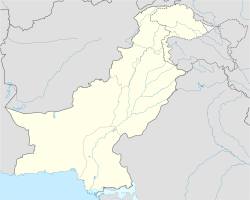world.wikisort.org - Pakistan
The Kalasha Valleys (Kalasha-mondr: کالؕاݰا دیݰ Kaĺaśa Desh; Urdu: وادی کیلاش) are valleys in Chitral District in northern Pakistan. The valleys are surrounded by the Hindu Kush mountain range. The inhabitants of the valley are the Kalash people, who have a unique culture, language and follow a form of religion that is associated with their surroundings like the mountains and rivers.[1][2][3][4] The largest and most populous valley is Bumburet (Mumuret), reached by a road from Ayun in the Kunar Valley. Rumbur is a side valley north of Bumburet. The third valley, Biriu (Birir), is a side valley of the Kunar Valley south of Bumburet.
Kalash وادی کیلاش | |
|---|---|
Valley | |
 | |
 Kalash وادی کیلاش Kalash Valley | |
| Coordinates: 35°42′2″N 71°41′29″E | |
| Country | Pakistan |
| Province | Khyber Pakhtunkhwa |
| District | Chitral District |
| Area | |
| • Total | 456.58 km2 (176.29 sq mi) |
| Elevation | 1,670 m (5,480 ft) |
| Population (2003) | |
| • Total | 9,000 |
| • Density | 20/km2 (51/sq mi) |
| Time zone | UTC+5 (PST) |
Kalash people

The Kalash people are a small religious and ethnic minority of Pakistan. The Kalash religion is polytheist faith similar to ancient forms of Hinduism and the people offer sacrifices for their gods. Their culture is interlinked with their religion and includes several unique festivals and celebrations. The people generally do not intermarry or cohabit regions with local Muslims but neither are they hostile towards them. The people are under legal and constitutional protection of the State of Pakistan as a scheduled tribe.[citation needed]
Gallery
- Typical homes in the Kalasha Valleys
- A school in the Kalasha Valleys
- A Kalasha woman
See also
- Ancient Greeks
- Alexander the Great
- Kaghan Valley
- Neelam Valley
- Naltar Valley
- Hunza Valley
- Chitral Kalash
References
- Minahan, James B. (10 February 2014). Ethnic Groups of North, East, and Central Asia: An Encyclopedia. ABC-CLIO. p. 205. ISBN 9781610690188.
Living in the high mountain valleys, the Nuristani retained their ancient culture and their religion, with many customs and rituals developed locally. The Kalasha Valleys are a source of attraction for Pakistanis as well as International tourists. There are three main valleys.
- "The Kalasha Valleys". Kalasha Heritage Conservation. Archived from the original on 11 November 2014. Retrieved 8 September 2014.
- http://www.tourism.gov.pk/kalash_valley_nothern_areas.htm [dead link]
- http://www.press.umich.edu/pdf/0472097830-02.pdf [bare URL PDF]
Другой контент может иметь иную лицензию. Перед использованием материалов сайта WikiSort.org внимательно изучите правила лицензирования конкретных элементов наполнения сайта.
WikiSort.org - проект по пересортировке и дополнению контента Википедии



